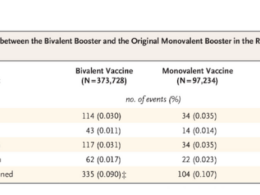mRNA Vaccinnes Platform for Covid-19 and beyond
Pfizer
December 20, 2021
Click here to watch a short video.
The swift delivery of the world’s first mRNA-based vaccine made the promise of mRNA technology clear, but we think that we are only just beginning to unleash the potential of mRNA for both vaccines and therapeutics that could result in some of the most important scientific innovations of our lifetime.
But what is mRNA and how does it work?
mRNA vaccines work differently than traditional vaccines that send a piece of a virus, or other pathogen, into the body to generate an immune response. mRNA vaccines instead send instructions, like a blueprint, that teaches the cells how to make a protein that triggers a protective immune response. mRNA delivers the blueprint to the body’s cells by traveling within a protective bubble called a Lipid Nanoparticle. Once inside, cells read the mRNA as a set of instructions, building proteins that match up to parts of the pathogen called antigens. The immune system sees these antigens as invaders — dispatching defenders called antibodies and T-cells — and helping to train the immune system for potential future attacks. So, the goal is that when the real virus comes along, the body can hopefully quickly recognize it, attach to it, and mark it for destruction before it can cause serious illness.
How are we using mRNA technology to change the future treatment landscape for patients?
We think that mRNA technology has potential applications in a variety of diseases areas. Beyond its use in vaccines to help prevent COVID-19 and potentially other vaccine preventable illnesses, such as the flu, mRNA-based therapies and vaccines could potentially be used to treat cancer, rare diseases, and autoimmune disorders. We’re confident that we have the tools necessary to unlock the power of mRNA to potentially transform outcomes for patients.
Watch to learn more about how mRNA technology works and understand why we’re thinking differently about this technology.
Originally published at https://www.linkedin.com.












